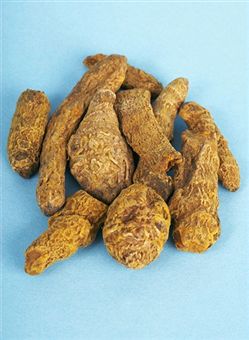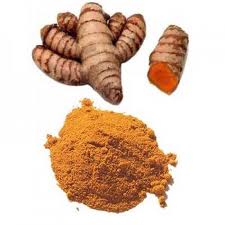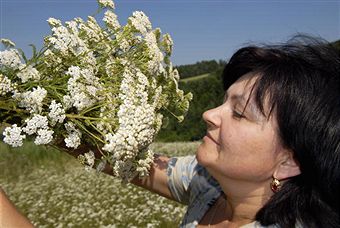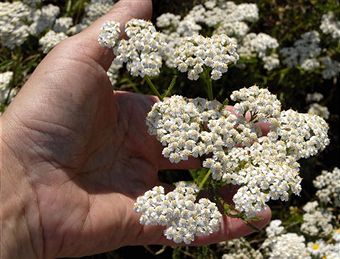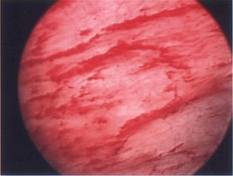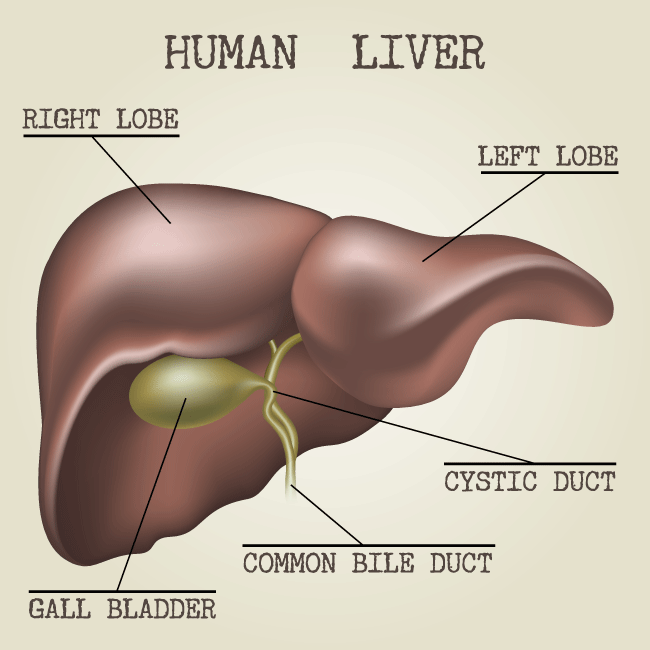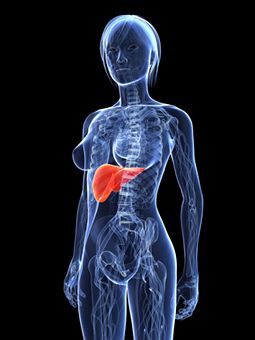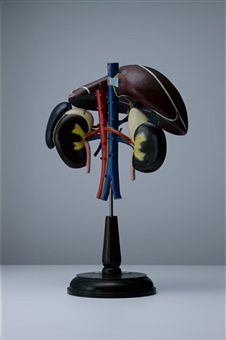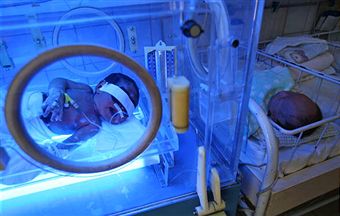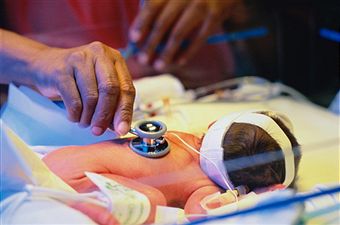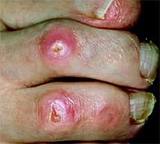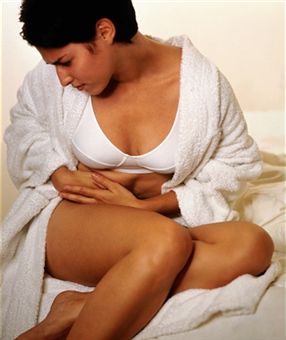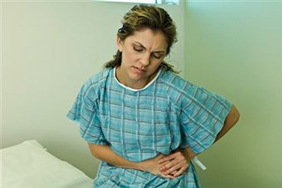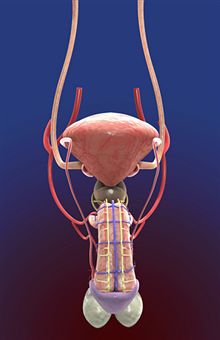Beta Carotene
Beta Carotene or B Carotene
Beta carotene is a vitamin A precursor that is produced by many different species of plants. It belongs to a group of chemicals known as carotenes, which are themselves part of a larger chemical group called carotenoids. beta-carotene, sometimes written as b carotene, is also known as provitamin A. Vitamin A, which can be synthesized from its provitamin, may sometimes be called retinol.
Carotenes belong to a large group of chemicals known as carotenoids. Carotenoids are all strongly colored red, yellow and orange pigments. They are fat or lipid soluble and are found in many different types of fruits and vegetables. Carotenoids are also antioxidants.
Chemical Makeup
A carotene is a type of chemical that was first discovered in the 19th Century after being isolated from carrots. There are three types of carotene that can be used by the human body to produce Vitamin A: alpha, beta and gamma carotenes. Since they are not themselves vitamins, but can be converted into a vitamin, the carotenes are considered to be precursors or provitamins.
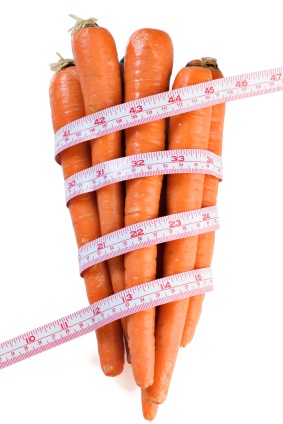
The chemical that can be produced from the carotenes, vitamin A, is an essential nutrient that plays a role in vision and growth. A vitamin A deficiency can be seriously harmful, and may even lead to death, although it can be cured by eating a diet rich in fruits and vegetables, which contain high levels of beta-carotene.
Carotenes are produced by plants, but although they are necessary as vitamin precursors in animals, they must be obtained from food since animals cannot synthesize carotenes for themselves.
Animals can produce vitamin A, however, and it is therefore possible to get vitamin A directly from the diet rather than having to manufacture it from beta-carotene. Beta or b carotene is the most common form of carotene.
Chemistry
All carotenoids are based upon a chain of hydrocarbons. This is made up of small units of isoprene. In beta-carotene, there are eight isoprene units, which form beta cycles at either end. This means that the units on the ends of the molecule are twisted around into circles.
The exact molecular structure of beta-carotene was discovered in the early 1930s. This was the first time that the structure of any vitamin or vitamin precursor had been established.
The orange color of a carotenoid is produced by the long chain of isoprene units. This is because the hydrocarbon chain absorbs light in the blue and green ranges, but reflects back red and yellow light. Only the reflected light is seen by the observer. beta-carotenes are found in orange and yellow colored fruits and vegetables, and are responsible for the color of these foods.
There are also beta-carotenes present in many green vegetables and leaves, but the orange color of the beta-carotenes is hidden by the green color of the chlorophyll. The leaves of deciduous trees turn orange before they fall because the chlorophyll in them has been broken down, leaving only the color of the carotenes.
During the 1950s, scientists began to develop techniques for artificially synthesizing beta-carotene. This led to the production of synthetic beta-carotene supplements and food colorings.
B carotene and Vitamin A
beta-carotenes are converted by the body into vitamin A or retinol. beta-carotene is converted into retinol, which is necessary for the eyesight. Retinol is converted into retinoic acid, which is used for growth and cell division. The functions of beta-carotenes in the body are therefore the same as those of vitamin A, since beta-carotene is converted into vitamin A before being used.
Beta-carotene is usually converted into vitamin A by gradually breaking down the beta-carotene molecule from one end, but it can also be converted by splitting the molecule in two. The conversion takes place within the cells that make up the small intestine. An enzyme called beta-carotene dioxygenase carries out the process.
Once vitamin A has been produced, it needs to be stored until it is required. It is first converted into retinyl esters, and is then transported through the body in the lymphatic system and blood. The vitamin A that is produced from the breakdown of beta-carotene is mainly stored in the liver in the form of retinyl esters. Some retinyl esters are also stored in the kidneys, lungs and adipose fat tissue, but between 50 and 80 percent of stored vitamin A is found in the liver.
Function
Vitamin A is essential for vision. The body converts vitamin A or retinol, through an oxidization reaction, into retinal. This is combined with an opsin protein in order to produce a light sensitive molecule. When one of these molecules is hit by a photon of light, the retinal component changes its shape, setting off a sequence of events that will eventually lead to a signal being sent to the visual part of the brain through the optic nerve, where it will be decoded as vision. Retinal is responsible for the ability to detect light and therefore to see.
There are two different types of light sensitive cell in the eye, and they use different chemicals in which to see. Rhodopsin is present in the light receptors known as rods, whereas a different chemical called Iodopsin is used by the cone cells. Rods are most effective in dim light, while cones provide color vision. Both types of receptors depend upon the ability of retinal to react to light.
Vitamin A also performs some other functions in the body. It is used in the production of some glycoproteins, which are protein molecules to which carbohydrates have been attached. Vitamin A plays a crucial role in growth and bone development, reproduction and the maintenance of the skin and mucous membranes such as the lining of the mouth and nose.
These linings help to prevent infection by keeping out infectious agents from the digestive system, urinary tract and the respiratory system. The importance of vitamin A in the body is clear, since a deficiency of this vitamin can lead to abnormal development of the bones, reproductive disorders, a condition called xerophthalmia that caused the cornea of the eye to become dry, and even to death.
Deficiency
Most people will consume an adequate amount of beta-carotenes in their normal diet, but it is possible to suffer from a vitamin A deficiency when a poor diet does not provide enough vitamin A or the carotenes fro which it can be manufactured. A diet that contains low levels of beta-carotenes will not be harmful as long as enough vitamin A is being consumed in other food. A diet without enough vitamin A or beta-carotene will be harmful. If there is a deficiency of vitamin A, due to malnutrition or illness, it can be cured by eating beta-carotene rich foods.
The earliest symptoms of a vitamin A deficiency are visual problems in low light situations, dry hair and skin, fingernails that break easily and a lowered resistance to infection. The more serious signs of a vitamin A deficiency are anemia, abnormal bone development, and permanent damage to the eyes.
The retina may be injured badly enough to cause blindness. Even when there are no vitamin A deficiency symptoms, a person who is not getting enough vitamin A could suffer from an increased risk of developing diarrheal and respiratory infections and a decreased growth rate and bone development. Fertility can also be reduced.
Health Problems with Deficiency
A vitamin A deficiency can be very serious. It is rare in the US, where most people consume more than enough beta-carotene and vitamin A in their diet.
However, a deficiency in vitamin A is the most common cause of preventable blindness in children worldwide, and it affects people in more than half of the countries in the world. Low income families in Southeast Asia and Africa are most likely to be affected. It is the young children and pregnant women within these families who are most likely to suffer from vitamin A deficiencies.
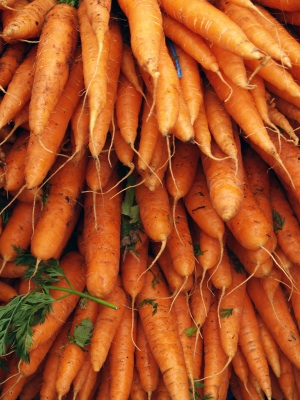
Vitamin A is required at higher levels during pregnancy, and children have smaller stores of vitamin A in their livers than adults. An adult can have enough vitamin A in their liver to last for an entire year, but a child’s supply can only last for a few weeks at most.
During Pregnancy
During pregnancy, the highest risk of developing a vitamin A deficiency occurs during the third trimester, when both baby and mother require large amounts of vitamin A. If the mother is not receiving enough vitamin A during this period, she will suffer from night blindness, and may experience other symptoms. \
She may also have a higher risk of maternal mortality. It is not recommended for women who have a good, balanced diet to take vitamin A or beta-carotene supplements, however, since they are not necessary. Vitamin A supplements could even increase the chances of birth defects in the baby.
Deficiency in Children
Children who are not obtaining enough vitamin A are at risk of blindness and other visual impairments, and they are also more likely to catch serious diseases such as measles, or to suffer from diseases that can cause diarrhea. These illnesses can be fatal. A lack of vitamin A can also cause growth problems and defects in the development of the skeleton.
According to the World Health Organization (WHO) it is estimated that there are 250 million children of preschool age who are suffering from a vitamin A deficiency, and that between 250,000 and 500,000 of these children are made blind because of this deficiency every year. Half of the children who go blind in this way will die within the next year.
It is possible to die from a vitamin A deficiency, and according to the World Health Organization (WHO), it is possible to significantly decrease mortality rates by ensuring an adequate supply of vitamin A.
Cases in the US
In the US, cases of vitamin A deficiency are most likely to occur in patients who are elderly or who are suffering from chronic illnesses that can reduce the absorption of vitamin A and carotenes from the intestine. Patients who have inflammatory bowel disorder (IBD), pancreatic insufficiency or cystic fibrosis have an increased risk of vitamin A deficiency.
Vegans and people who suffer from alcoholism are also more likely to have a deficiency, due to decreased ingestion and absorption of vitamin A. Some cases of malnutrition do occur in the US, but these are more common overseas.
It is possible to treat a vitamin A deficiency by eating foods that contain beta-carotene or vitamin A, or by taking supplements of one of these chemicals.
If the diet contains too much beta-carotene, it can lead to the skin turning a yellowish color. It will not, however, cause an excess of vitamin A in the body. Some of the vitamin A that is produced but which is not currently needed will be stored in the liver, where it can remain for several years. Some will be stored in the fat tissue of the body. If there is a lot of beta-carotene in the diet, then it will not all be converted into vitamin A. An excess of vitamin A in the body would be harmful.
Traditional Beliefs
It is often said that carrots can help people to see in the dark. Since one of the symptoms of a vitamin A deficiency is night blindness, this belief clearly has some foundation in fact. Although eating carrots cannot enhance night vision above normal abilities it can prevent it from deteriorating by providing the precursor for vitamin A production.
Antioxidant
beta-carotene is an antioxidant. Antioxidants are chemicals that can react with free radicals, which are highly reactive, charged molecules. Free radicals are produced by the body during respiration or energy production and can cause damage that in involved in the ageing process and cancer. It may be possible for antioxidants in food to protect the body from this sort of damage, but there is no definitive scientific proof that eating foods containing high levels of antioxidants can actually help to protect the body.
Medicinal Uses
beta-carotene has been approved by the US Food and Drug Administration (FDA) as a treatment for erythropoietin protoporphyria. This is an inherited condition that is very rare. It causes problems in the metabolism of the chemical porphyrin-heme. This can lead to photosensitivity, with the skin reacting painfully to light, dysfunction of the liver, and production of gallstones. Patients are treated with an over the counter beta-carotene supplement, and may also need to take antihistamines.
Consuming beta-carotene and other carotenoids can help to prevent a vitamin A deficiency, but a diet that is rich in carotenoids is not necessary as long as there is plenty of vitamin A in the diet. There is therefore no recommended intake of carotenoids according to the Institute of Medicine’s Food and Nutrition Board.
The American Heart Association, among other health groups such as the International Agency for Research on Cancer (part of the World Health Organization) advise that people should obtain beta-carotene from a diet that is high in fruits and vegetables rather than by taking dietary supplements.
Some of the scientific research that has been conducted on beta-carotene treatment has not yet produced clear results. These treatments have not yet been proven to be successful, but neither have they been proven unsuccessful.
Potential Uses
These potential uses for beta-carotene are as treatments for cataract prevention, reducing the adverse side effects of chemotherapy, treating chronic obstructive pulmonary disease (COPD), improving cognition and memory, preventing asthma attacks that are induced by physical activity, enhancing the immune system, promoting remission in patients with oral leukoplakia, preventing and slowing the progression of osteoarthritis, treating polymorphous light eruption (PLE), reducing the risk of sunburn and UV induced erythema, and reducing complications during pregnancy. Further research may clarify the effect of beta-carotene on these conditions.
beta-carotene has also been tested as a treatment for a number of other conditions for which it was not found to be helpful.
Potential Side Effects
There was even some evidence that it could be harmful when used in patients with these conditions, particularly if beat carotene was a replacement for other more beneficial therapies. beta-carotene was not found to be effective for the prevention or treatment of Alzhemier’s disease or abdominal aortic aneurysms (AAAs), preventing the development of new moles on the skin, preventing cancer or cardiovascular disease, eradicating the bacteria that can cause stomach ulcers (Helicobacteria pylori), preventing or slowing macular degeneration, preventing stroke, or reducing injuries following surgery.
Taking supplements of beta-carotene was also found to have no effect on overall mortality rates. There is some evidence that beta-carotene may be harmful in patients who have undergone angioplasty.
Sources of Beta-Carotene
beta-carotene occurs naturally in many plants. It is found in green vegetables and fruit and vegetables that are orange or yellow. Spinach, broccoli, carrots, red peppers, nectarines, melons and mangoes are all good sources of beta-carotenes.
A diet that includes five portions of fruit and vegetables every day will provide between 6 and 8 milligrams of beta-carotene per day. A healthy body can maintain adequate levels of vitamin A with just 1800 micrograms of beta-carotene, therefore it is rare for a diet to be deficient in carotenes. There is no recommended daily allowance (RDA) for beta-carotenes, due to a lack of evidence on its importance, but the RDA for vitamin A is 0.9 milligrams per day for an adult man and 0.7 milligrams a day for an adult woman. Pregnant women and those who are breastfeeding require a higher daily intake.
Vitamin A can also be consumed directly, rather than as its precursor, beta-carotene. Egg yolks, dairy products and fish oils all contain high levels of vitamin A. Liver is also rich in this vitamin, and in fact, the liver of the polar bear contains such large amounts of vitamin A that it is poisonous to humans.
Supplements
beta-carotene is available as a dietary supplement. It can be manufactured synthetically or derived from fungi, algae or palm oil. Supplements of beta-carotene can be taken in a number of different forms, including gelatin capsules, tablets and chewable tablets.
There is some scientific evidence that consuming too much beta-carotene in the form of supplements may be harmful. A study found that there was an increased risk of developing lung cancer when people who were exposed to other risk factors for the disease, such as smoking or working in an environment where they were exposed to asbestos, took beta-carotene supplements.
There is no evidence of what the effect may be on non-smokers and people who are not already at an elevated risk of lung cancer, but it is possible that taking supplements of beta-carotene could be harmful. No similar effect has been detected when beta-carotene is eaten in food.
This means that it is important, when taking beta-carotene supplements, to avoid consuming too much beta-carotene. The UK Food Standards Agency advises against exceeding a dose of 7 milligrams of beta-carotene a day. Doctors may recommend taking a higher dose than this in some cases, but this is only when there is a serious deficiency that needs to be corrected. Anyone who is a smoker or who has been exposed to asbestos should avoid taking supplements of beta-carotene.
Absorbing Beta-Carotene
In order to absorb beta-carotene, the body must use some of the fat that has been eaten. This means that when beta-carotene is taken as a supplement, it will require some dietary fat in order to be absorbed by the body. No difference has been found in the absorption rate between individuals consuming a low fat or a high fat diet, however, since the amount of fat that is required is very low.
In order to absorb beta-carotene, the body must use some of the fat that has been eaten. This means that when beta-carotene is taken as a supplement, it will require some dietary fat in order to be absorbed by the body. No difference has been found in the absorption rate between individuals consuming a low fat or a high fat diet, however, since the amount of fat that is required is very low.
Elevated levels of vitamin A in the body can be harmful, causing problems with the bones that may lead to an increased risk of experiencing fractures in old age. Although beta-carotene is converted into vitamin A it does not pose a similar risk. The body is not efficient enough at turning beta-carotenes into vitamin A for a high intake of beta-carotenes to cause high enough levels of vitamin A to harm the body.
Food Coloring
In addition to being manufactured as a dietary supplement, beta-carotenes are produced and used as colorings in food products.
Sources:
- Mayo Clinic: Beta Carotene
- Food Standards Agency: Beta carotene
- National Cancer Institute: Beta Carotene Supplements Confirmed as Harmful to Those as Risk for Lung Cancer

